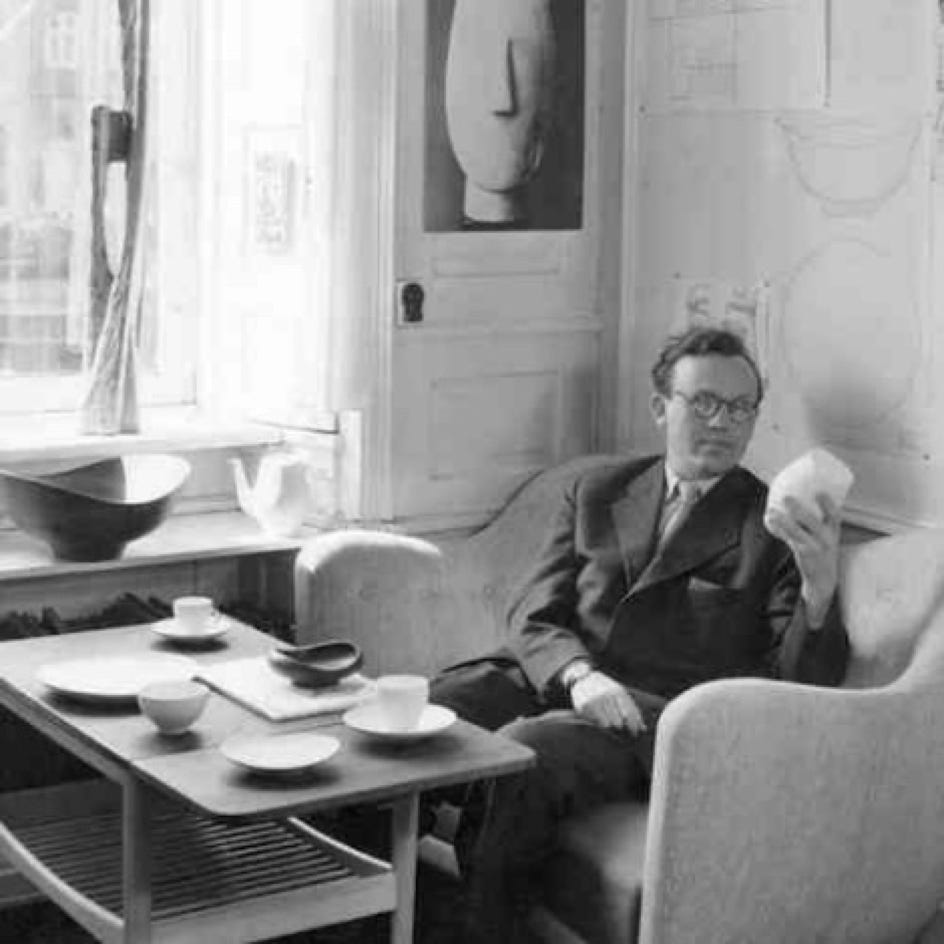15% off with DESIGN15

The Butterfly table, commissioned by cabinetmaker Niels Vodder and designed by Finn Juhl in 1949, is a highly exclusive table that was produced in a very limited number at the time of its creation. Made from walnut with a circular brass inlay, it was first exhibited alongside the iconic Chieftain Chair, Chieftain Sofa and Egyptian Chair at the famous Guild Exhibition in 1949.
With its three legs and organic shape, the Butterfly table is a very typical Finn Juhl design, a testament to the beauty of detail and the quality of craftsmanship. To open the table, simply lift the suspended section and slide the entire top over the base to a central position where all sides are equally supported by the three legs.
This highly unconventional table looks deceptively delicate.
Materials Solid walnut with circular brass inlay
Dimensions 110 x 46,5 x H50 cm
Butterfly Coffee table

As a teenager, Finn Juhl (1912-1989) wanted to become an art historian after having been fascinated by fine arts since childhood. His father prevented him from doing so and he studied architecture. Later, once his reputation as a furniture designer had been acquired, he would speak of himself as a self-taught man, certainly in reference to this thwarted vocation which forced him to make his intellectual journey alone. His very singular style owes much to this non-linear trajectory, with a very unacademic interpretation of art visible in his work. Finn Juhl began his studies in 1930, a key period that saw the birth of modern design and furniture.
His ultra-modern offices in the center of Copenhagen greeted visitors with a huge Japanese paper fish, a symbol of imagination. And rather than approaching furniture design from a functional, classical perspective, Finn Juhl approached his work as a sculptor. He sought beauty in volume and form, life and expressiveness. An approach that in the 1940's and 1950's was totally unprecedented. For Finn Juhl, it was clear that a piece of furniture could not be limited to a function, but also had to express an artistic sensibility.
While he remains world-famous for his furniture, Finn Juhl also designed several interior architecture projects and a few industrial products, including IBM typewriters. His greatest commercial success was with the Baker Company in the United States, which allowed him to mass-produce several pieces of furniture.
As an architect, he is known for the interior design of the United Nations Council in New York.